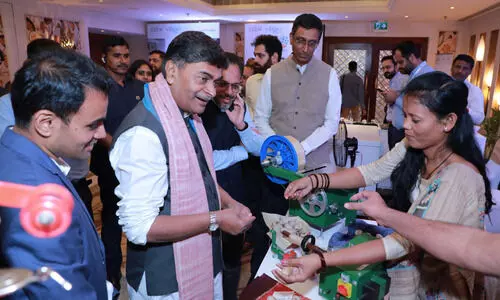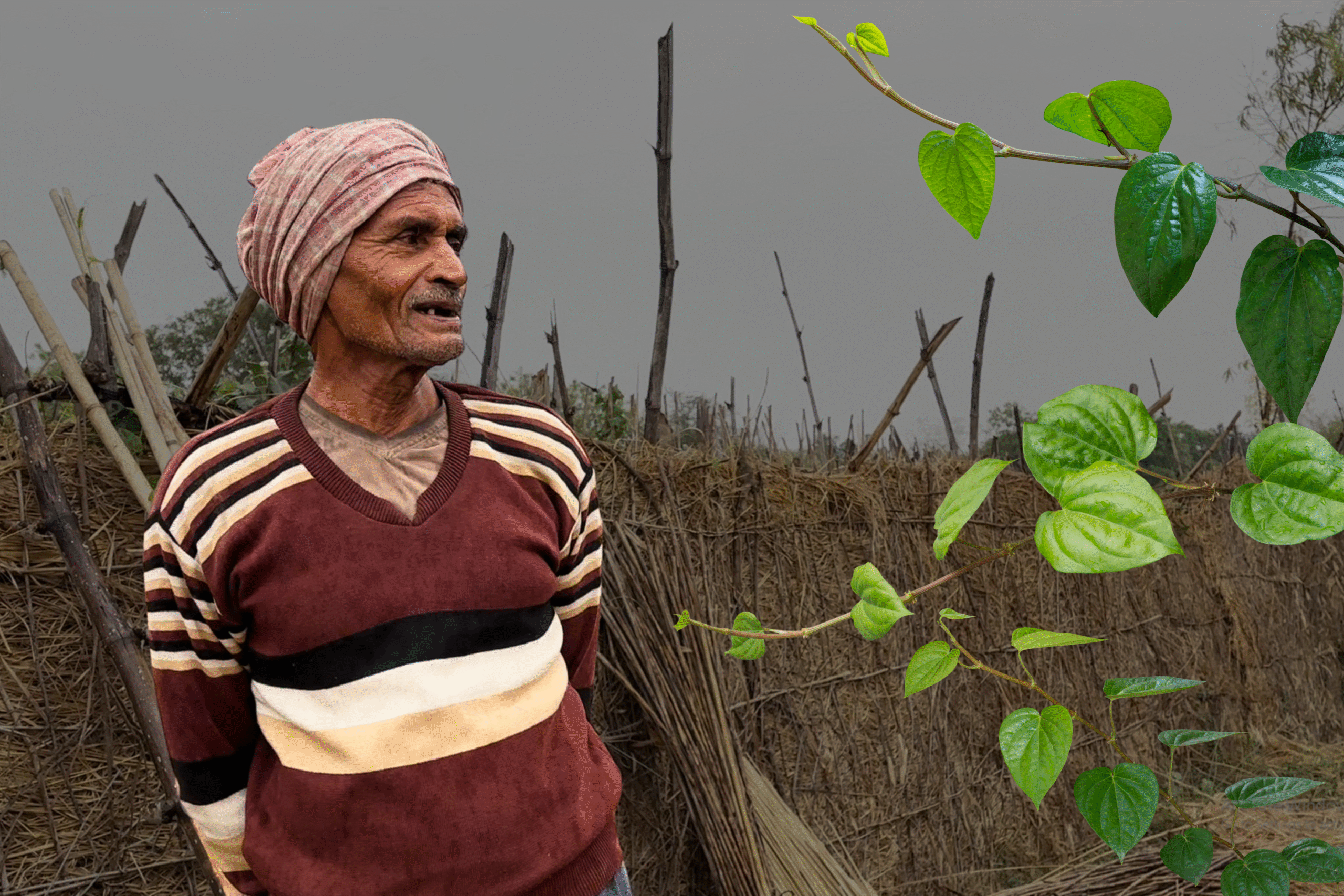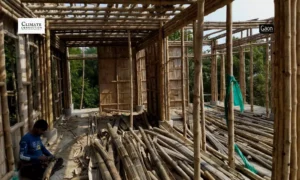New Delhi
Ab chal pade hain lakshya ko leke, Sooraj ka gola jeb me leke — the solar anthem launched yesterday by Raj Kumar Singh, Union Minister of Power and New & Renewable Energy, echoed through the halls of Kamal Mahal in New Delhi on May 17. It was exhilarating, promising and a clear message was being given: ‘This is India’s future’.
The launch was part of the National Summit on ‘Powering Sustainable Livelihoods’, an initiative of Council on Energy, Environment and Water(CEEW) a public policy research think tank based in New Delhi and Villgro, India’s oldest incubator of social enterprises. It was to present the potential of clean energy-powered technologies, and pose it as a 50 billion dollars investment opportunity.The summit saw a turnout of entrepreneurs, end-users, financiers, investors, funders and policymakers to discuss the way forward to capitalise on this massive opportunity, building on the sector’s successes, failures, and learnings.
“Ten years ago, India had 20 GigaWatt of renewable energy, and now India is the fourth-largest producer of clean energy,” Wase Khalid, Programme Associate, CEEW said.
He called the renewable energy market a “50 billion dollar market opportunity, which can create 37 million jobs” where “Uttar Pradesh has emerged as one of the top-markets.”
The keynote speaker, Union Minister Raj Kumar Singh said, “This movement towards solar and renewables is a movement towards liberation. Can you imagine when someone is the master or mistress of producing energy themselves from a ball of fire?”
From the horse’s mouth
RK Singh was referring to beneficiaries like Kuni Dehury, a tussar silk reeler who uses a solar-powered machine now, replacing traditional and electricity-dependent method earlier. Dehury is earning eight times more now, and is training 500 more silk reelers and weavers from her village in Odisha.
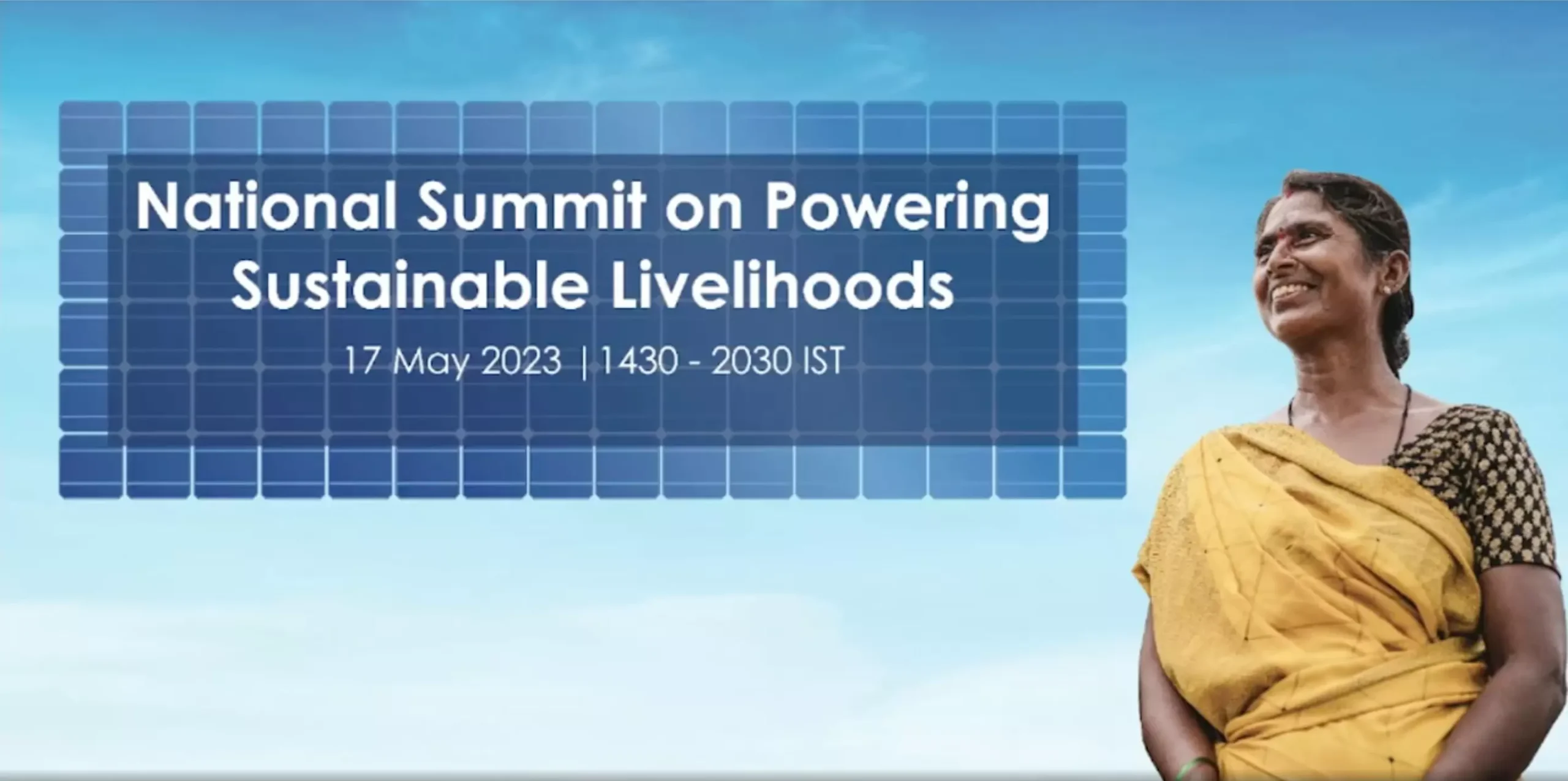
The launch was part of the National Summit on ‘Powering Sustainable Livelihoods’, an initiative of Centre of Energy, Environment and Water(CEEW) a public policy research think tank based in New Delhi and Villgro, India’s oldest incubator of social enterprises.
“In tribal areas like ours, access to uninterrupted electricity is a challenge. It affected our livelihoods and income. But a solar-powered reeling machine can run continuously and I can work even during the night,” Dehury said at the Powering Livelihoods National Summit.
Also Read: Lighting up Nepal’s Future by Marrying its Hydro and Solar Sectors
She isn’t a one off-example. The end-users of solar dryers (used for drying fresh vegetables), solar-powered refrigerators, solar-irrigation pumps — spoke at length about a life-changing phenomenon they are witnessing.
After 13 years in the fish-selling business, Bhawna Malandkar, a fisherwoman from Maharashtra “earned the highest income last year,” she said.
What changed? She started using a solar-powered refrigerator. The refrigerator was a solution devised by Devidayal Solar Solutions, a Mumbai-based company, founded by Tushar Devidayal, who was also present at the summit.
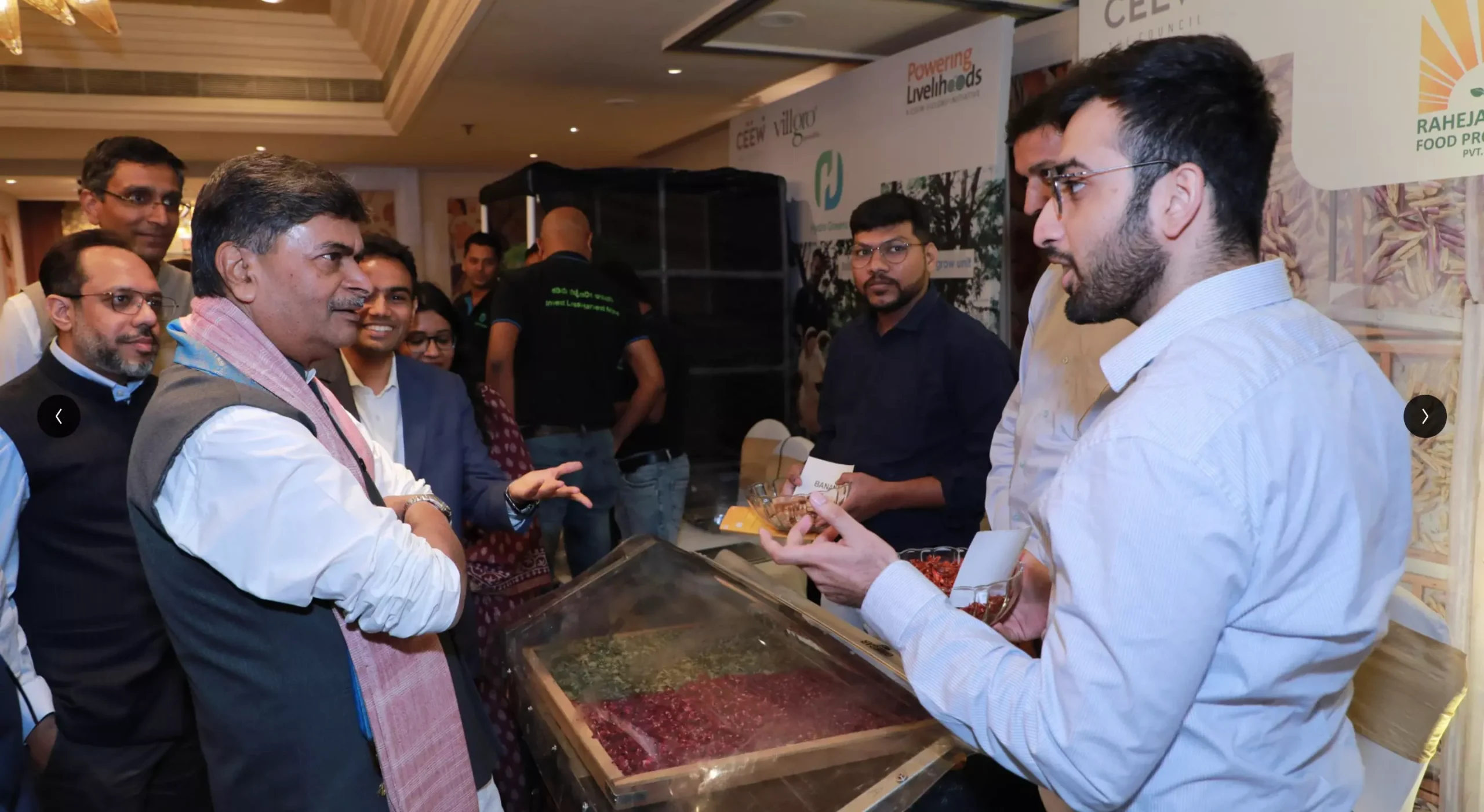
The Decentralised Renewable Energy(DRE) systems are being fuelled with the help of young entrepreneurs like Varun Raheja, founder of Raheja Solar, which manufactures solar-powered dryers.
“We are catering to industries including dairy, fisheries and agricultural sector and have completed over 1000 installations across 12 states. End-user financing is important,” Tushar said.
The Decentralised Renewable Energy(DRE) systems are being fuelled with the help of young entrepreneurs like Varun Raheja, founder of Raheja Solar, which manufactures solar-powered dryers.
“Now, farmers say one thing, ‘ab darr nahi hai‘ (there’s no fear anymore). That’s the actual impact. That was possible because of all the partnerships we made on the ground through Powering Livelihoods,” Raheja said.
Gender equity — a key aspect of ‘Powering Livelihoods’
There were two panel discussions at the summit. The first was moderated by Abhishek Jain, Director, Powering Livelihoods, and another one by Jenaan Lilani Bhargava, COO, Villgro. They both emphasised on the gender-equity model of ‘Powering Livelihoods’ and discussed the changes being witnessed on ground.
Also Read: UP Investors Summit: Energy and sports sectors remain the key focus areas
“Other progressive states are seeing women having ghoonghats till here (he pointed to his chest), but the women from Bihar have pulled it up to here (he pointed to his forehead),” said Pushpendra Singhtiwari, State project manager, JEEVIKA, Bihar Rural Livelihoods Promotion Society.
Tanya Kothari, Regional Manager – India, Shell Foundation said that “gender equity model is the core of their strategy and that the company has come up with a new mandate of having at least 50 per cent of its customers as women.”
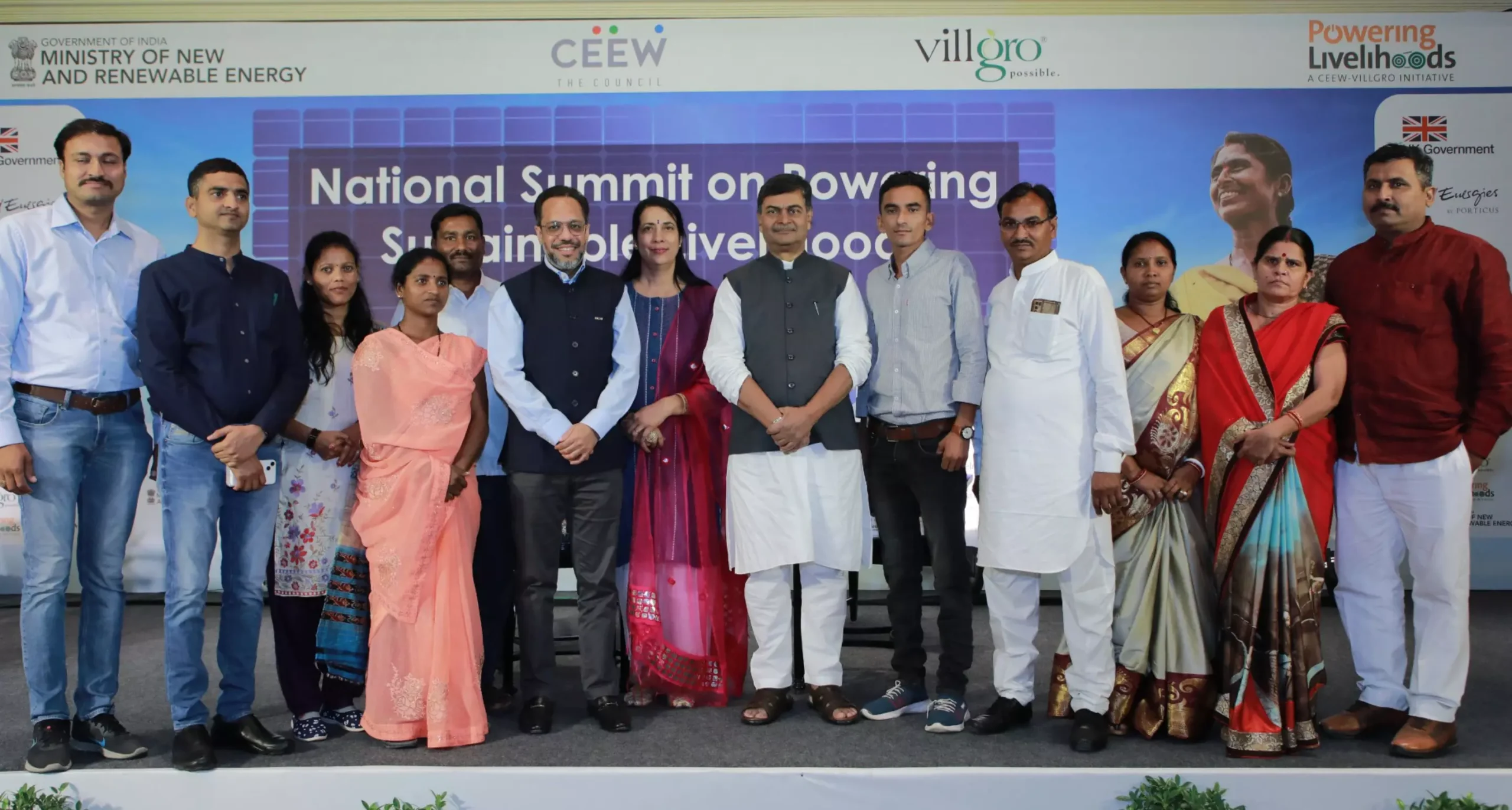
The summit was to present the potential of clean energy-powered technologies, and pose it as a 50 billion dollars investment opportunity.
“If DRE is an army, then women are the foot soldiers without whom the mission can’t be run,” she emphasised.
The summit also saw the presence of Shashank Kumar, Founder of DeHaat; Gaurav Mehta, Founder of Dharmalife; Aparna Dua, Director of Asha Impact; Jeevan K. Jethani, Senior Director, Ministry of New & Renewable Energy; Sridhar Easwaran, Head of Samunnati Foundation; Kanika Verma, Associate Vice President of Development Alternatives.
The Union Minister for Power and New & Renewable Energy visited the dedicated exhibition space at the summit featuring solar refrigerators, dryers, reeling machines, cold storage systems, and hydroponic fodder stations. The minister interacted with the entrepreneurs and end-users about the technologies, the market, the value chain.
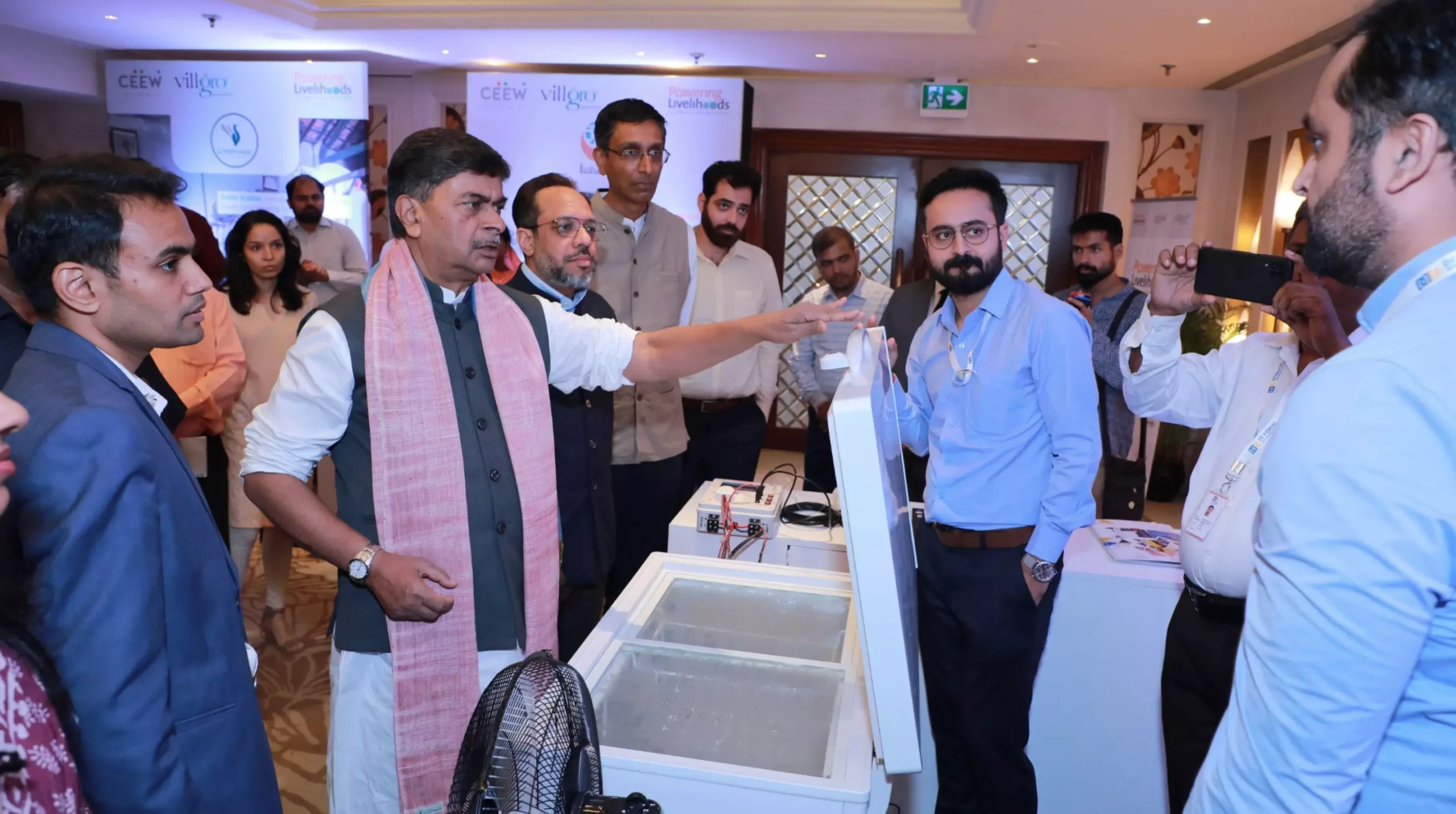
The refrigerator was a solution devised by Devidayal Solar Solutions, a Mumbai-based company, founded by Tushar Devidayal, who was also present at the summit.
Referring to the solar-based projects displayed by entrepreneurs, the minister said, “We need to exploit the true potential of distributed solar. I didn’t realise what was happening virtually, without our(government) support, through entrepreneurs – you are pioneers. You are actually helping people in need,” the minister said, congratulating the entrepreneurs and users supported by PoweringLivelihoods.
“The government plans to make DRE livelihood equipment affordable. One aspect of this will be tying up with banks. If a family wants to own a solar dryer, they should be able to get financing from the banks – we will work towards it,” he added.
The Union Minister also released two new reports at the summit. The reports show that clean technologies have the potential to impact 37 million livelihoods in India’s agriculture and textile sectors and translate into a market opportunity worth almost INR 4 lakh crore (about USD 50 billion). Further, 70 per cent of women and farmers using clean technology reported an income increase, typically by 35 per cent.

